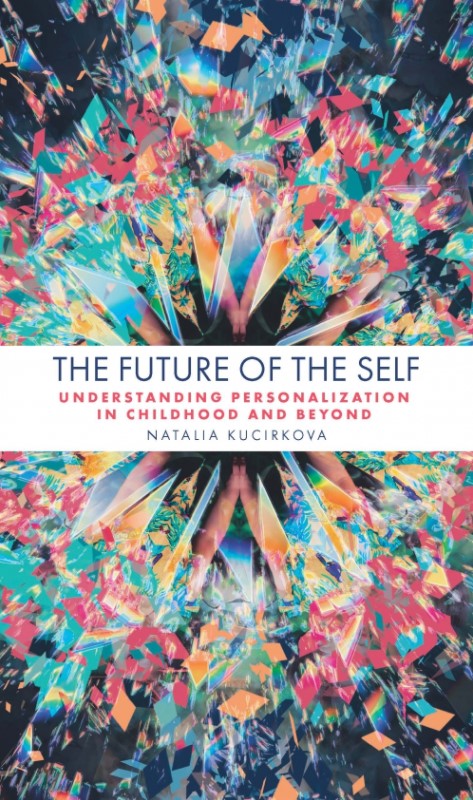With her latest book " The Future of the Self: Understanding Personalization in Childhood and Beyond ", Natalia Kucirkova addresses the opportunities, but also the threats, implied by a personalized reality.

Natalia Kucirkova is Professor of Early Childhood Research at the University of Stavanger and Professor of Reading and Child Development at The Open University, UK. Her research has been concerned with innovative approaches to support children’s reading, reading on-screen and personalized books.
Kucirkova blogs for Psychology Today and has previously published the books Digital Personalization in Early Childhood and How and Why to Read and Create Children's Digital Books.
Personalized reality
The extent to which children born between 2010 and 2025 have their lives digitally documented is unparalleled in history. It starts even before children are born: ultrasound baby scans are hung on fridges and shared via smartphones. Taking a selfie is a familiar thing, even for the very youngest.
The devices surrounding us respond to our wishes, needs, and requirements. Thanks to finely-tuned algorithms and our inclination to share personal information, we are met with a personalized digitized reality. From being a fairly simple system in the early 2000s, the Internet is now an arena where content is tailored and targeted, coincidences are few and the possibilities for adaptation are almost endless.
The collection and sharing of personal data have become a big business. While our understanding of what is identity has been ongoing, technological development has undergone a tremendous shift without time to pause and ponder how it challenges the construction of self.
Understanding the scope of digital personalization is crucial
There is no doubt that individual experiences are lucrative targets for technology providers. In many ways, the possibilities of personalized and customized experiences, are larger than those of interacting face to face. Technology facilitates a personal match with news, education, travel destinations, gift suggestions, partners. The list of how technology continues to offer personalized information, presented and packaged in the most expedient way to reach the person concerned, is long.
– If we agree that we are who we are because of the choices we make, how can we, in this personally adapted and technologically controlled everyday, make the best choices for ourselves and others? asks Kucirkova. With her book, she offers some thinking tools to address the great challenges this dilemma entails.
Many of our interactions are steered by artificial intelligence, smart devices occupy our homes. Advertisements address us by our names and follow us on the websites we visit. The Facebook feed serves us content that matches our interests and those of our friends. It is important to understand the extent to which digital reality affects our lives, and in particular how it affects children and adolescents. When children build their avatars at the age of three, how should we respond to the opportunity and threat represented by the digital, fully tailored experience?
The Internet as we know it today, with its social networks and algorithms, is designed in a way that makes personal adaptations indispensable. How else would we find the information we are looking for if all the algorithms that filter the content weren't there to direct our attention?
– Personalization is certainly not new – we interact with the outside world in a way that corresponds to the situation we are in. We adapt our behaviour and our speech to please others and to optimise our surroundings. However, digital personalization can be more intense, and in some cases more precise. Also, the adaptation that meets us through technology is often commercialized and used for political and marketisation purposes. In my book, I especially question the digital personalization targeting young children, says Kucirkova.
Offers tools for critical thinking
Kucirkova makes connections between themes that are often addressed separately and uses multi-disciplinary research evidence to paint a comprehensive picture of how digital personalization affects a child's identity development. Positive and negative consequences are balanced against the backdrop of larger, societal trends. By encouraging readers to think critically about these issues, Kucirkova's book challenges us to question the deeper consequences of the personal data economy.
The book makes it clear that personalization is about something bigger than posting a picture of children on social media, or sharing a status update from family life. These actions do not only create interaction with friends and followers but also fragment our social lives. We exist digitally on different platforms with images, video clips, sounds or texts, and each platform has its way of amplifying, reinforcing and shaping, our sense of self.
– To avoid extreme fragmentation of identities, we must find the human connections and meeting places that reinforce the best in us, both personally and collectively, says Kucirkova.
Text: Kristin Vestrheim Cranner.
Maybe you are also interested in
Are Sámi schoolchildren more involved in online bullying than other students?
A new research project is going to look into whether Sámi students in Norwegian schools are more involved in online bull...
Bringing the world's largest conference on bullying to Norway
The world's largest anti-bullying conference, the World Anti-Bullying Forum, will be held in Stavanger, Norway, in 2025....
Teachers bullying children – a global problem
All over the world, children are being bullied by adults in school. New research now shows that these students could als...
Countries that do well in the PISA assessment have one thing in common
The most common thing about countries that are 'successful' in PISA, is a higher level of gender equality in the populat...




